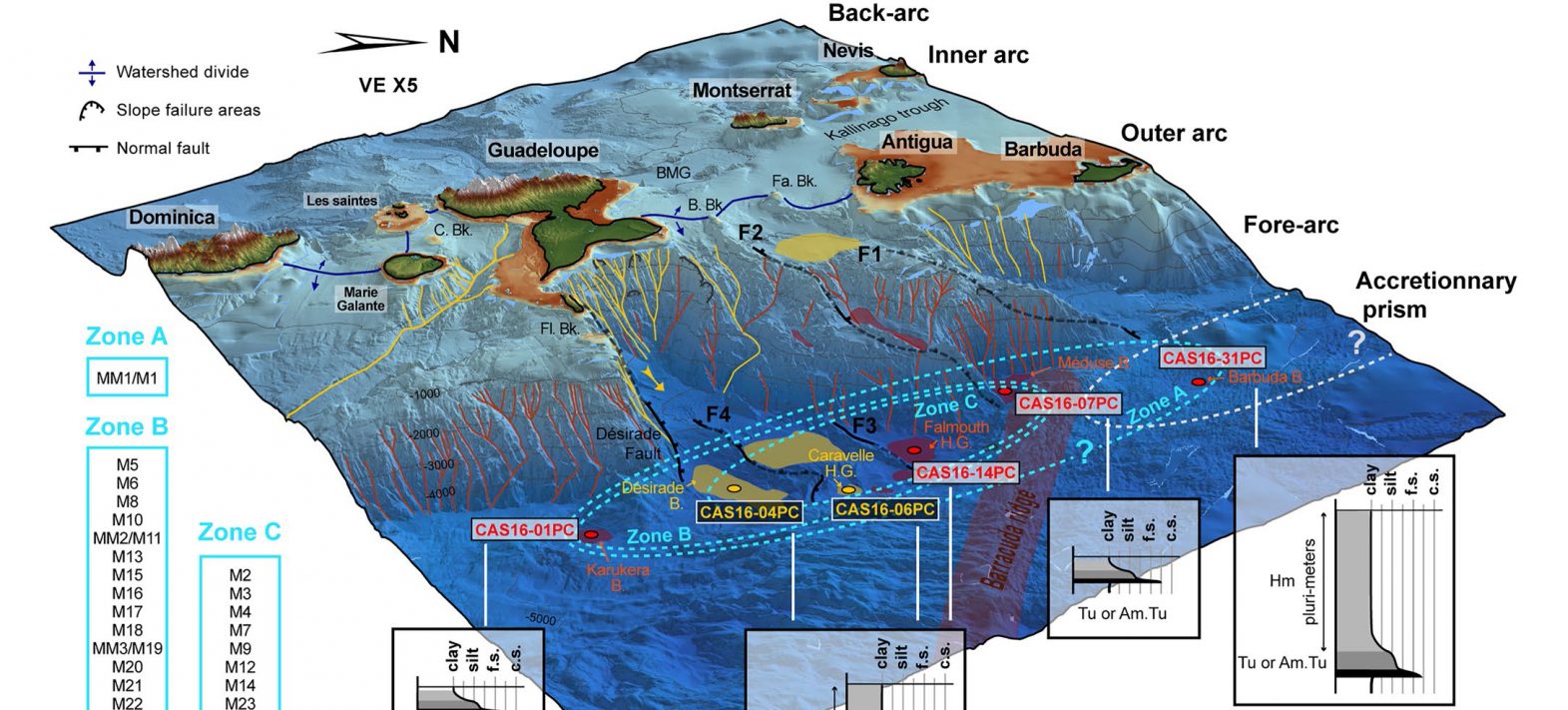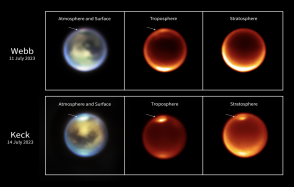Sediments from deep submarine basins reveal the history of mega-earthquakes in the Lesser Antilles
An international team led by researchers from the IPGP has, for the first time, traced the history of major earthquakes in the Lesser Antilles over the last 120,000 years. The study, published on January 31 in the journal Geochemistry, Geophysics, Geosystems, is based on the analysis of several up to 26 m-long sediment cores, sampled in deep (more than 5,000 m below sea level) fore-arc basins () east of Guadeloupe during the CASEIS cruise aboard the research vessel Pourquoi Pas ? The authors, from the IPGP, several CNRS laboratories, Ifremer and American and Canadian universities haveidentified up to 8m-thick catastrophic sedimentary deposits in several deep basins, resulting from large-scale submarine avalanches. Some of these deposits, very similar to those produced by the 2011 Tohoku earthquake in Japan, were most likely generated by very large earthquakes, possibly associated with tsunamis. The team found traces of 33 major earthquakes over the last 120 thousand years. The most recent occurred around 3,000 years ago. This reconstruction of the seismic history of the Lesser Antilles should provide a better understanding of seismic risk in the region.

3D map of the study area showing the main morphological features, coring areas and sediment profiles from the most recent event (click on the link in the right-hand column to see the full image).
Publication date: 23/02/2024
Research
Related teams :
Marine Geosciences
Related themes : Natural Hazards
Although two major, deadly and destructive earthquakes havestruck the islands of the Antilles arc (on 11 January 1839 off Martinique and on 8 February 1843 off Guadeloupe), the seismogenic potential of the Lesser Antilles subduction zone, where the American plates plunge beneath the Caribbean plate, remains poorly constrained and debated. Short-term data from GNSS stations tend to show that the subduction interface is sliding asismically, while geological data (corals) suggest that this interface has been locked for several decades and could rupture to produce an earthquake in the future. The origin of the historic earthquakes of 1839 and 1843 also remains debated.. Faced with the threat of a subduction earthquake on the scale of Sumatra in 2004 or Tohoku-Oki in 2011, it is essential to acquire new information to trace the seismic history of the Lesser Antilles subduction zone.
This was the main objective of the CASEIS1 marine cruise, which took place in 2016 aboard the Pourquoi Pas? vessel of the French oceanographic fleet, the ANR CARQUAKES project that succeded it and the Interreg PREST project: to provide information on the history of major earthquakes in the West Indies based on submarine paleoseismological studies.
It has been demonstrated that major earthquakes can remobilizesediment in submarine environments. By studying the resulting deposits, it is possible to reconstruct catalogs of major earthquakes over periods of tens of thousands of years.. The authors of the study present the results obtained from the sedimentary record of six giant piston cores (up to 26 m long) taken from the fore-arc basins above the megathrust, in the epicentral zone of the 1843 earthquake. Several types of data (geophysical: gamma density, magnetic susceptibility, etc.; geochemical: X-ray fluorescence; sedimentological) were acquired in order to identify and characterize the different deposits and distinguish those generated by earthquakes. Biostratigraphic data (planktonic foraminifera assemblage) and radiocarbon ages were obtained to constrain the chronology of these deposits.
The results show that 33 major events occurred over the last 120 thousand years, four of which were associated with exceptional HmTu (turbidite/homogenite) deposits up to 8m thick. The sedimentological characteristics of these deposits and their geographical extent (they extend over a distance of more than 170 km) suggest that they were generated by major earthquakes.. Calculations of ground accelerations show that subduction mega-thrust would be the only ones strong enough to have destabilized and remobilized the sediments. The exceptional length of the record has revealed an atypical behavior in the subduction zone: three seismic super-cycles lasting between 15 and 25 thousand years have been identified over the last 60 ka. During these super-cycles, several mega-thrust occurred with recurrence times decreasing from 5000 to 2000 years. The last mega-thrust occurred around 3000 years ago.
1. CASEIS sea campaign, Feuillet, 2016, https://doi.org/10.17600/16001800
References :
Seibert, C., Feuillet, N., Ratzov, G., Beck, C., Morena, P., Johannes, L., et al. (2024). Sedimentary records in the Lesser Antilles fore-arc basins provide evidence of large late Quaternary megathrust earthquakes. Geochemistry, Geophysics, Geosystems, 25, e2023GC011152. DOI : 10.1029/2023GC011152








